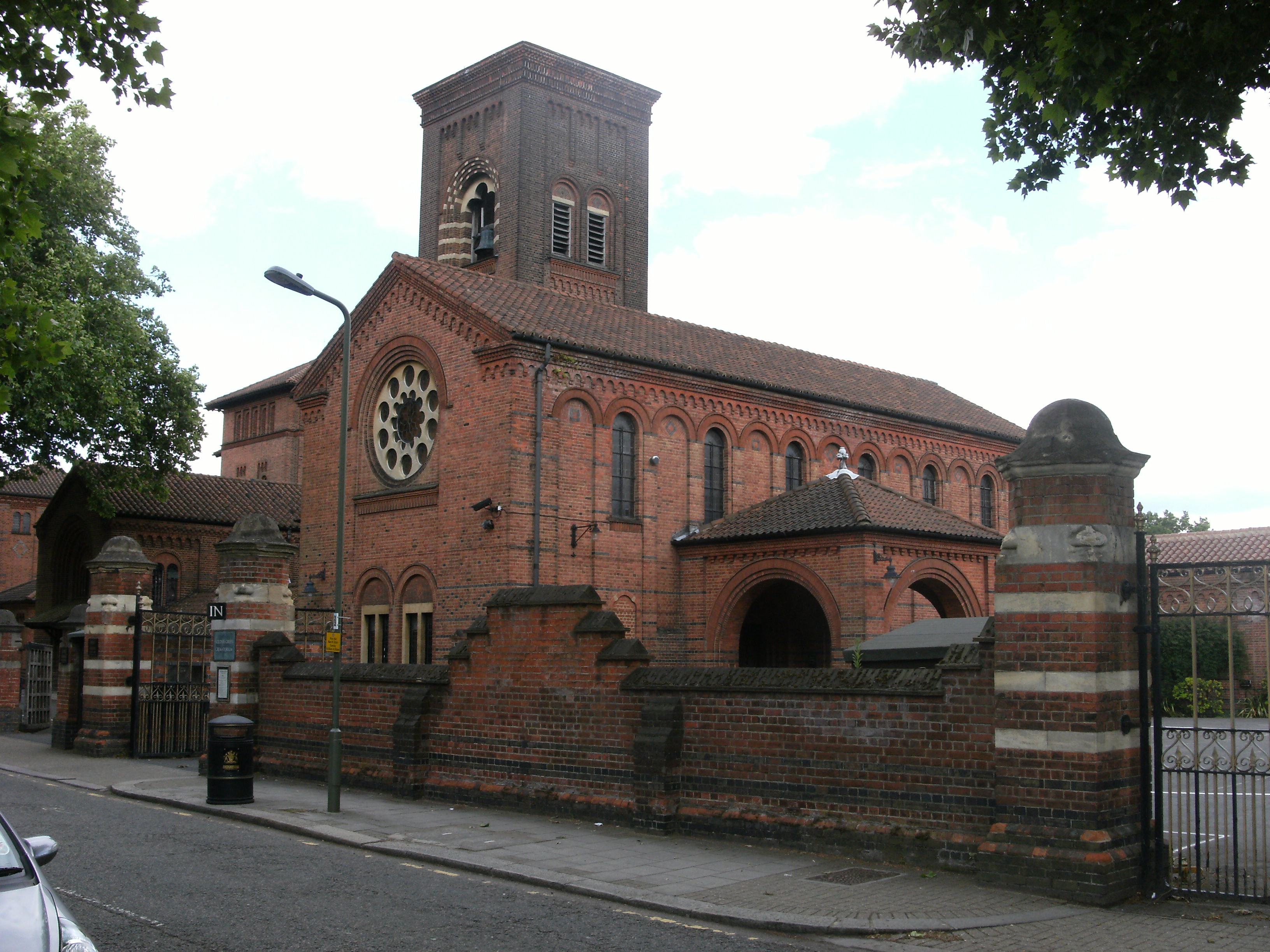Archive
Golders Green Crematorium
- Golders Green Crematorium
- Crematorium
Numerous emigrants were cremated in Golders Green Crematorium after their death, including the gallerist Alfred Flechtheim, the psychoanalyst Anna Freud, the architect Ernö Goldfinger and the art historian Rosa Schapire.
Word Count: 30
62 Hoop Lane, Golders Green, London NW11.

Golders Green Crematorium, Hoop Lane, London, 2011 (Mark Ahsmann, CC BY-SA 3.0 , via Wikimedia Commons). 
Urns with the ashes of Sigmund and Martha Freud and other family members, Ernest George Columbarium, part of Golders Green Crematorium (JHvW, CC BY-SA 3.0 , via Wikimedia Commons). Freud, Ernst, et al., editors. Sigmund Freud. Sein Leben in Bildern und Texten. Insel, 1989.
Grainger, Hilary J. “Golders Green Crematorium and the Architectural Expression of Cremation.” Mortality, vol. 5, no. 1, 2000, pp. 53–73. Taylor & Francis Online, doi: https://doi.org/10.1080/713685990. Accessed 25 February 2021.
Jupp, Peter C., and Hilary J. Grainger, editors. Golders Green Crematorium, 1902–2002: A London Centenary in Context. London Cremation Company, 2002.
Neurath, Marie. Letter to Agnes Holthusen. Agnes Holthusen Papers (Germanisches Nationalmuseum, Deutsches Kunstarchiv, Nuremberg, 9 February 1954), ZR ABK 421.
Steinthaler, Evelyn. Jüdisches London (Mandelbaum City Guide). Mandelbaum, 2008.
Word Count: 85
- 1902
- London
- Burcu Dogramaci. "Golders Green Crematorium." METROMOD Archive, 2021, https://archive.metromod.net/viewer.p/69/1470/object/5145-11251943, last modified: 27-04-2021.
-
Rosa SchapireArt HistorianLondon
The art historian Rosa Schapire, a supporter of Expressionist art, contributed to the presence of Expressionist art in England with loans and donations from her art collections rescued to London.
Word Count: 30
Anna FreudPsychoanalystLondonThe psychoanalyst Anna Freud and her partner Dorothy Burlingham-Tiffany opened the War Nursery research and care facility in Hampstead in January 1941 under the impact of the bombing of London.
Word Count: 29
Gerty SimonPhotographerLondonThe Berlin photographer Gerty Simon established a studio in Chelsea, London. Her solo exhibition Camera Portraits from 1935 featured a distinctive portrait of the émigré art dealer Alfred Flechtheim (shown above).
Word Count: 30
Aid to RussiaExhibitionLondonThe Aid to Russia exhibition was organised in 1942 by the emigré architect Ernö Goldfinger and his wife, the painter Ursula Goldfinger, at their house in Hampstead.
Word Count: 26